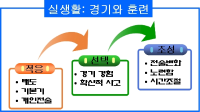
Purpose This study confirmed the historical significance of the First World War US Combat Strength Training Fitness System for contributing in the ROK military sports development. Methods This research method is literature analysis to be focused by the previous US Army Field Manuals. Results Concretely, The meaning of US Army fitness training was divided into four stages. First, this study confirmed the actual condition of the US Army fitness before First World War. Since 1916, US Army has developed a group physical training program applied the items suitable for the war and has systematically reflected the program in the recruitment training. Second, this study confirmed the process of operating military fitness program during the First World War. US Army physical fitness program provided an effective method to suit soldier fitness for war. Third, this study observed the fitness training changes of US Army after the First World War. At that time, US Army focused on maintaining health and basic physical strength for civilians and reserve forces, but US Army ran parallel with basal physical fitness and combat physical fitness after the Korean War. Fourth, this study compared military strength training between First World War and current US Army. Since First World War, the training of US Army has been developed around doctrine and manuals to be maintained the consistency of the system. In conclusion, US Army physical training system of First World War meant to be provided the basis of current military physical education and physical training. In other words, current fitness training is not dogmatic but has evolved, and it accommodated the basics of soldier physical training course from the past.

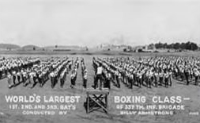



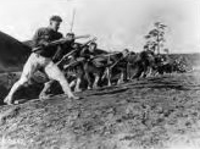

PURPOSE This study compared and analyzed the current status, system, and trend of evaluation and operation of member sports organizations of the Korean Sport & Olympic Committee from 2006 to 2020. METHODS A literature study was conducted for this study. RESULTS The 15-year evaluation was developed through three periods: preparation, execution, and construction. The preparation stage (2006–2009) was when the evaluation index development and operation system were established. The execution stage (2010–2016) is a critical time; when the current system was established. This was when evaluation perception was spread in the sports world and continuous changes such as evaluation system and operation, indicators. Finally, the construction stage (2017–2020) was when the evaluation system was established after integrating the Korean Sport & Olympic Committee and the National Sports Council. CONCLUSIONS It played a role in promoting balanced growth from organizational management to ethical management of sports organizations through preparation, execution, and construction. Further, the evaluation reflected the continuous development and change of the Korean sports community and one organizational assessment.
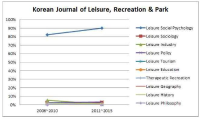
This study identified the trends in leisure and recreation research in Korea for the past 10 years. We classified previous research based on ten leisure and recreation research areas and compared the research trends of five journals: Korean Journal of Leisure, Recreation & Park, Korean Journal of Physical Education, Journal of Sport and Leisure Studies, Journal of Leisure Studies, and Journal of the Korea Contents Association. The results indicated that most research published over the last decade were included in the area of leisure social psychology, and the area of leisure social psychology showed the highest ratio in five journals compared with other research areas. To resolve the problematic results, this research suggests that future research needs to have diversity to extend the leisure and recreation research realm and to improve the quality of leisure and recreation research in Korea. We expect that this study would be used as a foundation for future leisure and recreation research.

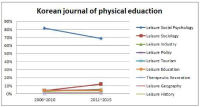

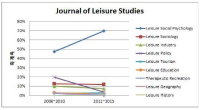
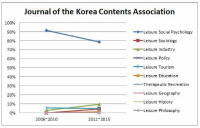

Purpose The purpose of this study is to introduce the basic concepts and procedures for topic modeling and to explain topic modeling to news articles about dementia-related physical activities. And it is also to discuss the possibility of using topic Modeling in the field of physical education. Methods In this study, the LDA algorithm of topic modeling is explained and the analysis procedure is summarized step by step by text preprocessing, text formatting, and topic number determination. The application cases were selected from 274 news articles about dementia-related physical activities reported in 13 major daily newspapers from 2000 to 2018. Results When the number of topics is 3, the Coherence Score figure is the highest. Topic 1 is about welfare services for dementia patients, Topic 2 is about prevention of dementia, and Topic 3 is about dementia research. The ratio by each subject is Topic 2 (46.0%), Topic 3 (33.2%) and Topic 1 (20.8%) in order of high ratio. Conclusion Topic modeling is an effective methodology to extract potential information excluding subjectivity of researchers. It is expected to be used when searching for information in massive texts in the field of physical education.



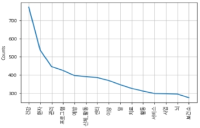
Purpose This study conducted legal, institutional and pedagogical consideration on C0rule in Korean collegiate sport. Methods (1) Systematically examined the unconstitutional elements of C0rule in terms of the basic rights of student-athletes, and (2) reviewed pedagogical validity in terms of higher education, college credit system and physical education. Results First, C⁰rule adopted the result (the credit) of the uniform education as the standard of sanctions. Providing discriminatory educational opportunities according to academic credit is regarded as the infringement of equal rights. Second, since the college sports league is the only place to prepare for vocational education and employment for student-athletes, restricting their opportunities according to the credit is also against the freedom of happiness and choice of profession. Third, C0 credit, the minimum standard, overlooked purpose and level of higher education and rigorous evaluation. Last, C0rule has resulted in overlooking the academic significance and status of college education, especially physical education. Conclusions This study is meaningful in that it brought the subjects to discourse field and provided opportunities to review the fundamental problem of the school sport and the basic rights of student-athletes. At the present stage of the transition of the school sport system due to the introduction of various regulatory systems, we should be careful about oligopoly and unilateral flow of knowledge and production of other alienation.

Purpose This study attempted to investigate the difference on job satisfaction and service quality between non-regular and regular workers in commercial sports facilities. Methods With the purpose of the study, the purposive sampling as the non-probability sampling method was used to intentionally select the representative cases. We conducted through utilizing in-depth interviews with 6 non-regular and regular workers, respectively, who have worked for more than a year at total commercial sports facilities holding more than 3 programs with more than 500 memberships. This study aimed to explain real phenomena as much as possible by utilizing NVivo 11, one of qualitative research method programs, on the basis of raw data. Results In conclusion, non-regular and regular employment types in commercial sports facilities did not affect service quality provided for customers. However, it was derived that there was a slight difference between regular and non-regular workers on job satisfaction. Conclusion It is necessary to improve the wage and compensation system for regular workers as well as the labor policy to improve treatment of the wage according to the qualification of non-regular workers in commercial sports facilities. In spite of the instability of non-regular workers, the effort of converting into regular workers would evoke organizational commitment, loyalty, and attachment of non-regular workers, when properly acknowledged.






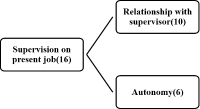










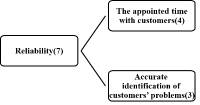





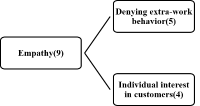

The present study has been carried out with a purpose of a long term estimation for the body size and BMI (Body Mass Index) of Korean children and youth using ARIMA, a time series model. In order to select an estimation model for the optimum time series, among the time series analysis method of SPSS22.0 statistic programs, a multivariate ARIMA (p,d,q) model has been selected that has an input series (physical education facility, time spent for physical education, animal source foods, GDP deflator, animal source food intake ratio), using annual average data of height, weight, and BMI data from 1965 to 2015. Among the several optimal measurements in ARIMA model with estimation variables, an optimal RMSE-based model (RMSE: Root Mean Square Error) has been selected. Using this model, the estimation model and estimated values of children’s height, weight, and BMI have been suggested for each age group. The results are as the following. The trend estimation of height follows a logistic curve, with both male and female groups showing increasing trends. The weight has a trend of increasing ratio higher than height. BMI also shows a trend curve similar to weight. The estimation model has been mostly ARIMA(0,1,0). In particular, the average BMI has been estimated as 22-23 for male students in 6th, 8th, 9th, 11th and 12th grade in 2030. This indicates the recent increasing obesity as children and youth occupy most of daily time for play culture that is far from physical activities, such as computer games, smartphone games, and video games at home.







The purpose of this study was to examine competitiveness of sport product companies by brand origin in the Korean market by analyzing attribute evaluation of sport products, brand equity, and purchase intention and their causal relationship. Competitive sport brands were selected in global, Japanese, and Korean brands by a pilot survey. Then, this study selected a population participating in sports for all, elite sports, professional sports, and leisure sports and 498 effective questionnaires were secured. As a result, Korean consumers for sport products evaluated global sport brands in the highest level, Japanese sport brands in the moderate level, and Korean sport brands in the lowest level in the evaluation of attribute evaluation of sport products, brand equity, and purchase intention. Moreover, the evaluation of participating types in sports for all, elite sports, professional sports, and leisure sports showed the same result in the order of global, Japanese, and Korean sport brands. Global sport brands had a sequential causal relationship from attribute evaluation of sport products to brand equity and purchase intention and formed a consumption behavior model that attribute evaluation of sport products led to purchase intention. On the other hand, while Korean sport brands had a sequential causal relationship from attribute evaluation of sport products to brand equity and purchase intention, attribute evaluation of sport products did not lead to purchase intention. Finally, it was confirmed that global brands such as Nike and Adidas had a high market position and Korean sport consumers’ purchase behavior was determined based on information of product attributes and brand equity.

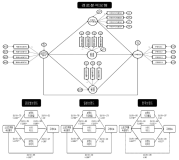
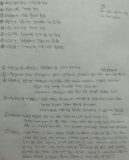
Values, such as development and social responsibilities, are added on victory-oriented Korean sport. Those change of values are along with discussions regarding improvement of players’ training environment, however, discussions on improvement of players’ training environment so far rather focused on ideological concepts, such as players’ holistic human development and human rights, therefore, there was a lack of discussion on practical training methods or teaching methods. This study focused on mental coaching as a specific method for improvement of players’ training environment. Mental coaching provides players with performance enhancement, personal growth, and self-actualization utilizing mental training, consulting, and mentoring in their training processes. This study examined a possibility of introduction of mental coaching as a training camp method for players by creating a training camp reflected on mental coaching perspectives and verifying the program effects of application. First of all, a mental coaching training camp was created through consultations with mental coaches, supervisors, and coaches. Goals of the mental coaching training camp were development of competition-routines, establishment of competition-circumstance coping strategies, comprehension of elite-players’ psychological resources, goal-setting, and motivation and the program consist of badminton competitions, mental education, a special lecture by an Olympic gold medalist, tracking, and sharing. The mental coaching training camp proceeded with middle and highschool badminton players and 31 coaches during three-days and four-nights. As results, the training camp was effective for players’ performance enhancement, personal growth, and self-actualization and team coaches realized a necessity of improvement in terms of their training and teaching behaviors. In other words, mental coaching training camp played a role as a source of long-term change as well as short-term results, thus, this study verified that the mental coaching can be introduced as a training camp method. It is anticipated that this study can provide sport fields and academic sport areas with an opportunity to consider both training contents and methods when it comes to discussion players’ training environment development.

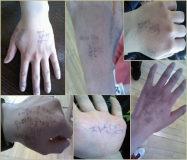
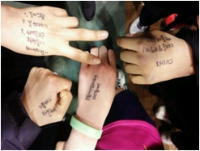
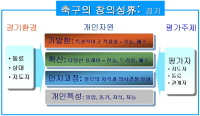
The purpose of this study was to explore a framework of understanding football performance. Researcher review was conducted to organize perspectives for football performance and drew implications as well as drift of football performance based on intelligence approach. Discussions for intelligence had been proceeded in concepts of learning ability, multiple intelligence, successful intelligence, and moral intelligence. Discussions of football performance approaches fitness, skill, and strategies in traditional intelligence aspects. The multiple intelligence perception discusses perspective, mentality, body, and analysis. The successful intelligence perspective deals with creativity, practical intelligence, and football talents. However, specific discussions for moral intelligence have not been progressed yet. FIFA’s social responsibility project and UEFA’s RESPECT campaign reflect that the discussions of football performance develops in a way of the moral intelligence. In European football, issues regarding value, such as RESPECT and against Racism, are currently emerging. Considering the change in the European football, the global football leagues will share the issues related to value in the near future. Given the fact that discussion for intelligence had been proceeded learning ability, multiple intelligence, successful intelligence, and moral intelligence, the moral intelligence will be a main concern in the further football performance discussion. The moral intelligence will be incorporated into football performance evaluations soon. Furthermore, teams and players will strive to place efforts in order for pursuing value and reputation as factors of performance.

